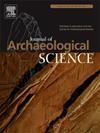Ancient glass: From crystal ball to seeing clear
IF 2.6
1区 地球科学
Q1 ANTHROPOLOGY
引用次数: 0
Abstract
Specific chemical compositions of glass indicate certain raw materials, sources, technical processes and chronologies. A decade ago, Journal of Archaeological Science published a perspective into future glass research, emphasizing the need to further characterize glass compositional groups with their production location and long-distance movement, next to determining the timing and location of inventions and innovations in glass technologies and their spreading in and between ancient societies. While many of the previously suggested lines for future research are very much still valid today, this paper revisits those prospects and offers some thoughts for the decade to come. As different technologies of glass making and more and more areas of production become known through chemical analysis, the prime challenge of glass research in the near future will be to unravel the ‘why’ of these technical developments and innovations. Glass making will need to be studied in its societal and environmental context to come to answers on scales of production, resource management and processes such as recycling. Additionally, cross-craft interactions between glass making and other industries remain understudied and deserve further work.
古代玻璃:从水晶球到清晰可见
玻璃的特定化学成分表明了某些原材料、来源、技术过程和年代。十年前,《考古科学杂志》(Journal of Archaeological Science)发表了一篇对未来玻璃研究的展望,强调需要进一步研究玻璃成分群体的生产地点和远距离移动特征,其次是确定玻璃技术发明和创新的时间和地点,以及它们在古代社会中的传播。虽然许多先前建议的未来研究方向在今天仍然非常有效,但本文重新审视了这些前景,并为未来十年提供了一些想法。随着不同的玻璃制造技术和越来越多的生产领域通过化学分析而为人所知,在不久的将来,玻璃研究的主要挑战将是解开这些技术发展和创新的“原因”。玻璃制造需要在其社会和环境背景下进行研究,以找到生产规模、资源管理和回收等过程的答案。此外,玻璃制造和其他行业之间的交叉工艺相互作用仍有待进一步研究,值得进一步研究。
本文章由计算机程序翻译,如有差异,请以英文原文为准。
求助全文
约1分钟内获得全文
求助全文
来源期刊

Journal of Archaeological Science
地学-地球科学综合
CiteScore
6.10
自引率
7.10%
发文量
112
审稿时长
49 days
期刊介绍:
The Journal of Archaeological Science is aimed at archaeologists and scientists with particular interests in advancing the development and application of scientific techniques and methodologies to all areas of archaeology. This established monthly journal publishes focus articles, original research papers and major review articles, of wide archaeological significance. The journal provides an international forum for archaeologists and scientists from widely different scientific backgrounds who share a common interest in developing and applying scientific methods to inform major debates through improving the quality and reliability of scientific information derived from archaeological research.
 求助内容:
求助内容: 应助结果提醒方式:
应助结果提醒方式:


